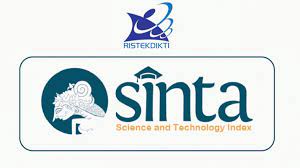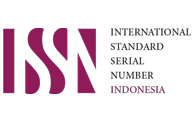Overview of Tax Payment Transfer Implementation
Keywords:
billing code tax payment, overbooking (Pbk)Abstract
The purpose of this study is to find out the process of completing the application for Transfer (Pbk) and compare it with the applicable Standard Operating Procedure (SOP), how much the completion rate of Transfer (Pbk) is for the application, the reason for the Taxpayer choosing to do Transfer (Pbk), and the obstacles faced in completing the application for Transfer (Pbk). The author uses qualitative research with data collection methods in the form of library methods and field methods. The subjects studied in this scientific work are the Service and Functional Section Executors of the Tax Instructor/Functional Assistant of the Tax Instructor. While the object under study is the process of completing a transfer application (Pbk) at the East Jakarta Middle Tax Service Office for 2021 and 2022. The data collection process is in the form of a field method by taking original data and interviews conducted on May 4 2023 to. May 10, 2023 at the East Jakarta Middle Tax Service Office. While the library method is done by reading literature in the form of Minister of Finance Regulations, Tax Laws, books, scientific journals, other implementing regulations, and articles to obtain secondary data. Completion of the application for Transfer (Pbk) at the East Jakarta Middle Tax Service Office is in accordance with the applicable Standard Operating Procedure (SOP) and the completion rate during 2021 and 2022 reaches 100%. Taxpayers registered at the East Jakarta Middle Tax Service Office submit an application for Overbooking (Pbk) due to an error in making the billing code. During the completion of the application for Transfer (Pbk) the obstacles faced were in the form of applications submitted for 1 (one) Taxpayer, the number of which was quite a lot and the period for submitting the application was approaching the due date for payment of the tax period to be transferred
Downloads
References
Bandiyono, A., & Septiana, B. F. (2018). Pelaksanaan E-Billing Pajak Pada Kantor Pelayanan Pajak. Jurnal Kebijakan Publik, 9(1), 19-26.
Hartini, H., Wardhana, A., Normiyati, N., & Sulaiman, S. (2022). Peran self-efficacy dalam meningkatkan minat berwirausaha women entrepreneur yang dimediasi oleh pengetahuan kewirausahaan. Jurnal Ekonomi Modernisasi, 18(2), 132-148.
Hartini, H., Ramaditya, M., Irwansyah, R., Putri, D. E., Ramadhani, I., Wijiharta, W., ... & Farida, N. (2021). Perilaku Organisasi.
Hartini, H., & Habibi, D. (2023). Pengelolaan Kinerja Berbasis Balanced Scorecard. Indo-Fintech Intellectuals: Journal of Economics and Business, 3(2), 198-209.
Keputusan Direktur Jenderal Pajak Nomor 522/PJ/2002 tanggal 16 Desember 2002 tentang Pelaksanaan Teknis Tata Cara Pemindahbukuan atas Keleliruan Pembayaran Pajak Penghasilan dalam Mata Uang Dollar Amerika Serikat.
Keputusan Direktur Jenderal Pajak Nomor 75/PJ/2020 tanggal 20 Februari 2020 tentang Penetapan Perubahan Tugas Dan Fungsi Kantor Pelayanan Pajak Pratama.
Khalimi & Iqbal, M. (2020). Hukum Pajak Teori dan Praktik. Bandar Lampung: Aura. Maimunah, S. & Anggreni, D. U. (2014). Tinjauan Pelaksanaan Kewajiban Perpajakan
Perusahaan Jasa Konstruksi dan Kesesuaian dengan Standar Akuntansi Kontrak Konstruksi (PSAK Tahun 2012) pada PT Imperial Media Panenmas. Jurnal Ilmiah Manajemen dan Akuntansi Fakultas Ekonomi (JIMAFE), (p.2).
Mardiasmo. (2018). Perpajakan Edisi Terbaru. Yogyakarta: Andi.
Mustika, R. (2010). Tinjauan Pelaksanaan Penagihan Tunggakan Utang Pajak Pada Kantor Pelayanan Pajak Pratama Bandung Karees (Doctoral dissertation, Universitas Komputer Indonesia).
Nuswantoro, U. A. (2018). Analisis Pembayaran Pajak Melalui Pemindahbukuan di KPP Pratama Bekasi Barat pada Tahun 2016 dan 2017. Karya Tulis Tugas Akhir. Tangerang Selatan: Jurusan Pajak, Politeknik Keuangan Negara STAN.
Peraturan Menteri Keuangan Republik Indonesia Nomor 242/PMK.03/2014 tentang Tata Cara Pembayaran dan Penyetoran Pajak.
Peraturan Menteri Keuangan Republik Indonesia Nomor 131/PMK.01/2015 tentang Pedoman Penyusunan Proses Bisnis, Kerangka Pengambilan Keputusan, dan Standar Operasional Prosedur di Lingkungan Kementerian Keuangan.
Peraturan Menteri Keuangan Republik Indonesia Nomor 184/PMK.01/2020 tentang Perubahan atas Peraturan Menteri Keuangan Nomor 210/PMK.01/2017 tentang Organisasi dan Tata Kerja Instansi Vertikal Direktorat Jenderal Pajak.
Peraturan Direktur Jenderal Pajak Nomor PER-05/PJ/2017 tentang Pembayaran Pajak Secara Elektronik.
Risyanli, F., Pribadi, D., & Bahri, S. (2019). Sistem Informasi Monitoring Pembayaran Pajak (SIMPEJAK) pada Kantor Pelayanan Pajak Pratama Sukabumi. Swabumi (Suara Wawasan Sukabumi): Ilmu Komputer, Manajemen, dan Sosial, 7(1), 77-83.
Saputra, D., & Sujianto, S. (2022). Efektivitas Program Pembayaran Pajakelektronik (E-Billing) Dikantor Pelayanan Pajak Pratama Tampan Kota Pekanbaru. Jurnal Ilmiah Wahana Pendidikan, 8(15), 147-155.
Shara, Y., Sholahuddin, M., Ekhsan, M., & Erpurini, W. (2021). Setahun COVID 19 Dalam Perspektif Ekonomi, Pendidikan, Kesehatan, Sosial Budaya, Komunikasi dan Hukum. Penerbit Lakeisha.
Standard Operating Procedures (SOP) Kementerian Keuangan Republik Indonesia Direktorat Jenderal Pajak Nomor PPLC30-00195 tentang Tata Cara Penyelesaian Pemindahbukuan (Pbk).
Undang-Undang Republik Indonesia Nomor 7 Tahun 2021 tentang Harmonisasi Peraturan Perpajakan.
Wardhana, A., & Sudirman, A. (2022). Pengantar Bisnis (Konsep dan Strategi E-Business). Media Sains Indonesia.
Yusuf, Mohammad Ismail. (2011). Analisis Determinan Pajak Pertambahan Nilai (PPN) di Sumatera Utara. Tesis Sekolah Pascasarjana Universitas Sumatera Utara.
Downloads
Published
Issue
Section
License
Copyright (c) 2023 Hartini Hartini, Jessica Ayu Ashara (Penulis)

This work is licensed under a Creative Commons Attribution-ShareAlike 4.0 International License.
Licence
Creative Commons license
The journal is published by Larisa Ekonomi licensed under a Creative Commons Attribution-ShareAlike 4.0 International License
You are free to:
Share — copy and redistribute the material in any media or format
Adapt — remix, transform, and develop material for any purpose, even commercially
Under the following conditions:
Attribution — You must give appropriate credit, provide a link to the license, and indicate if any changes have been made. You may do so in any reasonable way, but not in any way that would imply that the licensor endorses you or your use.
Share Alike — If you mix, modify, or build upon the material, you must distribute your contributions under the same license as the original
No additional restrictions — You may not apply legal provisions or technological measures that legally restrict others from doing anything the license permits














